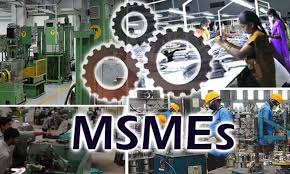Introduction
Micro, Small, and Medium Enterprises (MSMEs) form the backbone of the Indian economy. They play a critical role in driving economic growth, employment generation, and innovation. MSMEs in India contribute around 30% to the nation’s Gross Domestic Product (GDP), and their impact on exports is significant, accounting for 45-50% of total exports. With over 63 million MSMEs operating across various sectors, these enterprises are crucial in promoting inclusive growth and entrepreneurship across the country.
As India strives to become a $5 trillion economy, the role of MSMEs has never been more important. They not only provide employment to millions but also foster regional development by driving industrial growth in rural areas. Their ability to innovate, create jobs, and contribute to exports makes them a vital part of India’s economic future.
Key Contributions of MSMEs
1. Employment Generation
MSMEs are the second-largest employer in India after the agriculture sector. With over 110 million jobs generated, they provide vital employment opportunities to a large section of the population, especially in rural and semi-urban areas. MSMEs offer inclusive employment, particularly to marginalized communities, women, and unskilled workers. This is critical in reducing poverty and providing financial stability to rural households, helping to bridge the socio-economic gap between urban and rural India.
The sector has also been instrumental in promoting women entrepreneurs. Many women-led MSMEs have contributed to sectors such as textiles, handicrafts, and services, fostering gender equality in business.
2. Regional and Rural Development
One of the defining roles of MSMEs in India is their ability to reduce the urban-rural divide. By promoting industrialization in rural areas, MSMEs reduce the need for migration to cities in search of jobs. Rural MSMEs are involved in various sectors such as agro-based industries, handicrafts, and cottage industries, which not only generate income but also keep traditional crafts alive.
Moreover, MSMEs help in achieving balanced regional development. With initiatives to foster industrial growth in less developed regions, they prevent economic concentration in metropolitan areas, thereby promoting equitable growth across the country.
3. Contribution to Exports
MSMEs contribute significantly to India’s export economy, with nearly 45-50% of the country’s total exports coming from this sector. Export-oriented MSMEs, especially in textiles, handicrafts, leather, and automotive components, have established a strong global presence. These enterprises offer innovative products at competitive prices, helping India maintain its global trade competitiveness.
The government’s push for “Make in India” has provided an additional boost to MSMEs, encouraging them to create products that are not only consumed domestically but also exported globally.
4. Support for Large Enterprises
MSMEs also play a crucial role in the supply chains of large corporations. They provide raw materials, components, and services to major sectors like automotive, construction, electronics, and manufacturing. By being a part of the larger ecosystem, MSMEs contribute to the overall industrial growth and economic development.
In addition to their supply chain integration, MSMEs offer flexibility, customization, and innovation that large corporations often cannot match. This dynamic partnership between MSMEs and large enterprises ensures the latter can operate efficiently, while MSMEs continue to thrive.
Challenges Faced by MSMEs
1. Access to Finance
One of the biggest hurdles MSMEs face is access to finance. Many MSMEs find it difficult to secure formal credit due to lack of collateral, complicated loan application processes, and high-interest rates. While banks are reluctant to lend to small businesses, non-banking financial companies (NBFCs) and digital lenders have stepped in to fill the gap. However, more needs to be done to improve access to affordable credit for MSMEs, especially for smaller and rural enterprises.
2. Technological Barriers
Many MSMEs struggle with adopting new technology due to financial constraints and lack of awareness. Outdated machinery, limited digital skills, and insufficient access to technological innovation hinder their growth. The government has launched several initiatives, such as the Digital India program, to encourage tech adoption among MSMEs, but the digital divide continues to pose a challenge.
3. Regulatory Compliance
Compliance with regulatory requirements can be a daunting task for MSMEs. From tax regulations to labor laws and environmental norms, the complexity of India’s regulatory environment makes it difficult for small businesses to operate smoothly. While reforms such as online registration portals and single-window clearances aim to simplify these processes, the need for more streamlined and efficient regulatory frameworks remains.
4. Market Access
Competing with large corporations for market access is another challenge MSMEs face. Limited resources, marketing capabilities, and information about global markets restrict their ability to expand. This challenge is especially acute for export-oriented MSMEs, which often struggle to navigate the complexities of international trade.
Government Support and Policies for MSMEs
1. Atmanirbhar Bharat and MSME Support
In a bid to strengthen the MSME sector, the Indian government has reclassified MSMEs based on investment and turnover, allowing more businesses to avail benefits such as tax exemptions and financial support. The MSME Champions Portal, launched under the Atmanirbhar Bharat initiative, is designed to provide grievance redressal, access to markets, and various forms of support to MSMEs.
2. Credit and Financial Support
The Pradhan Mantri MUDRA Yojana provides easy loans to micro and small enterprises, offering credit without collateral to help small businesses grow. Additionally, the Emergency Credit Line Guarantee Scheme (ECLGS) was rolled out to provide financial support to MSMEs during the COVID-19 pandemic, offering credit guarantees and interest-free loans to struggling businesses.
3. Skill Development and Training
To improve productivity and efficiency in MSMEs, the government has introduced skill development initiatives such as Skill India. Additionally, technology centers have been set up to help MSMEs adopt modern production techniques and improve their competitiveness.
4. Market Access and Export Promotion
The Zero Defect, Zero Effect (ZED) certification scheme promotes quality manufacturing and sustainability among MSMEs. The government also supports MSMEs in gaining global exposure through trade fairs and export promotion councils, ensuring that Indian MSMEs remain competitive in international markets.
Opportunities for MSMEs in India’s Economic Development
1. Digitalization and E-Commerce
With the rise of digital tools, e-commerce platforms, and fintech solutions, MSMEs have an unprecedented opportunity to expand their market reach. Platforms like Amazon, Flipkart, and Udaan provide MSMEs access to a larger consumer base, while fintech companies offer simplified payment and credit solutions.
2. Global Supply Chain Integration
Post-pandemic shifts in global supply chains present new opportunities for Indian MSMEs. With the government’s push for the “Make in India” initiative, MSMEs are encouraged to integrate into global supply chains, tapping into new international markets.
3. Focus on Sustainability and Green Practices
MSMEs that focus on sustainable practices, renewable energy, and waste management will not only reduce their carbon footprint but also cater to a growing market of environmentally conscious consumers. Government schemes aimed at helping MSMEs adopt green technologies further support this transition.
4. New Emerging Sectors
Sectors like AgriTech, CleanTech, and HealthTech are emerging as new opportunities for MSMEs. These sectors, driven by rising demand for innovative and sustainable solutions, offer enormous potential for growth, especially in rural and semi-urban markets.
Future Outlook for MSMEs in India
The MSME sector is expected to continue playing a pivotal role in India’s economic growth. With the increasing adoption of digital technologies, stronger financial support, and a favorable regulatory environment, MSMEs are set to drive India’s growth in the coming years. Their role will be vital in helping India achieve its target of becoming a $5 trillion economy, contributing significantly to GDP, employment, and exports.
Conclusion MSMEs are a critical engine of India’s economic development. Their contribution to employment, exports, and regional development cannot be overstated. However, they continue to face challenges, including access to finance, market access, and regulatory compliance. With continued government support, easier access to finance, and greater digital adoption, MSMEs can thrive and help shape the future of India’s economy. The growth potential for this sector remains high, making it a key driver of inclusive and sustainable economic growth.




